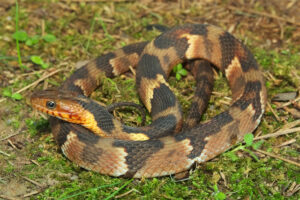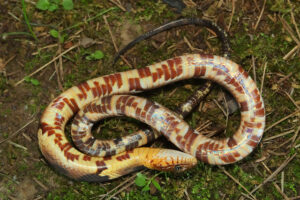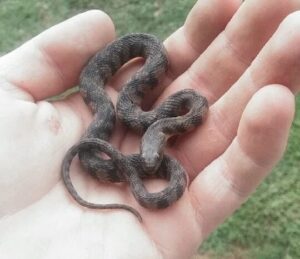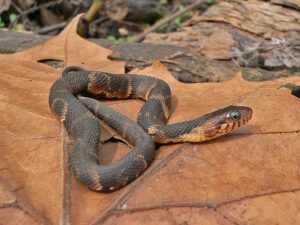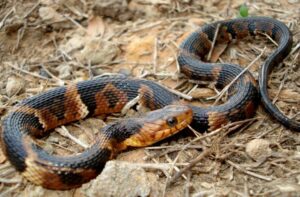Broad-banded Water Snake (Nerodia fasciata confluens)
Updated on
25/04/2024The broad-banded water snake is a beautiful, semi-aquatic colubrid that owes its name to the wide, irregular-shaped blotches or bands on its back. This subspecies of the banded water snake is usually active between late March and October.
Scientific Classifications
- Suborder:Serpentes
- Family:Colubridae
- Genus:Nerodia
- Species:N. fasciata
- Subspecies:N. f. confluens
Conservation Status
Description
Size
It is typically 20-30 in (61-76 cm) in length.
Color and Appearance
The stocky body of the snake bears an irregular pattern of broad black bands that fade to shades of orange or yellow and brown. Often a faint dark line runs diagonally from the eye past the corner mouth. The yellow belly is boldly black markings. The head is only slightly wider than the neck. It has keeled scales that are arranged in rows of 21-27 near the midbody. It has divided anal scales and round pupils. The juveniles are more brightly colored than the adults.
Are They Dangerous to Humans
When the snake feels threatened and cannot escape, it flattens its head and neck and vigorously tries to defend itself. Though the snake is non-venomous, it can viciously bite if harassed. It also secretes a strong-smelling musk from glands located at the base of its tail.
Broad Banded Water Snakes at a Glance
Distribution
Its range includes Arkansas, Oklahoma, Louisiana, East Texas, Mississippi, and Missouri in the US.
Habitat
The broad-banded water snake is typically found in and around water bodies. The nocturnal serpent can sometimes be seen basking in the sun among branches above the water or on logs in river sloughs, cypress swamps, or oxbow lakes.
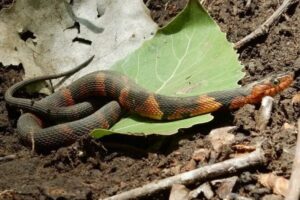
Lifespan
It lives for 7-8 years.
Predators
Birds of prey like the great blue heron, semi-aquatic animals like the alligator, and other larger snakes eat the broad-banded water snake.
Diet
It feeds on frogs, fish, tadpoles, and toads.
Reproduction
Viviparous (gives birth to live young)
Courtship and mating occur in April and early May, with the young being born in late July, August, or early September. There are 7-40 young in a litter. They are about 7-9 in (17.78-22.86 cm) in length.
Similar Species
Cottonmouth
The cottonmouth (Agkistrodon piscivorus) can be distinguished from the broad banded water snake by its elliptical pupils. The venomous cottonmouth is also bigger and heavier.
Source
flickr.com, reddit.com, pinglelist.org, i0.wp.com, i.pinimg.com

